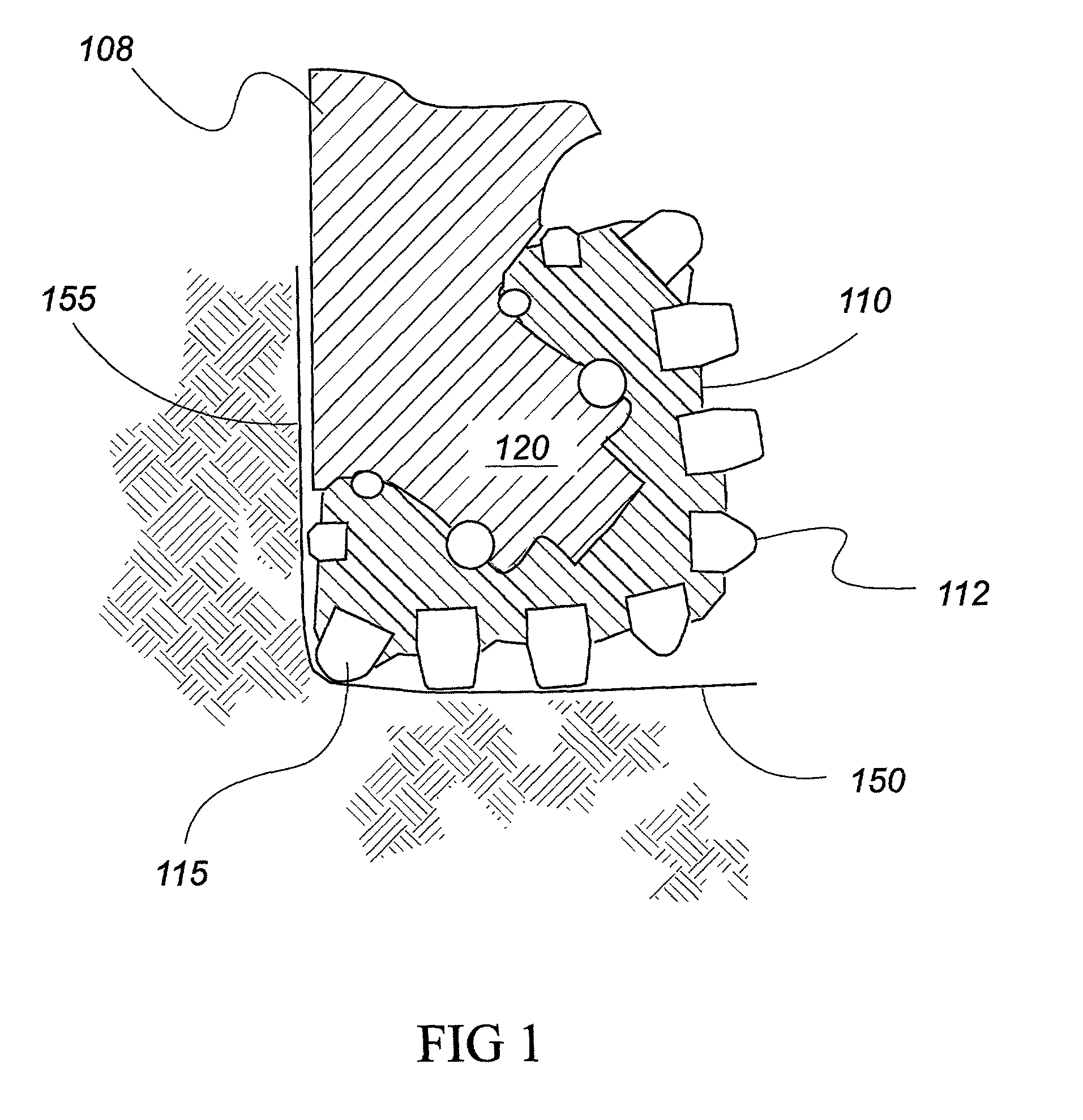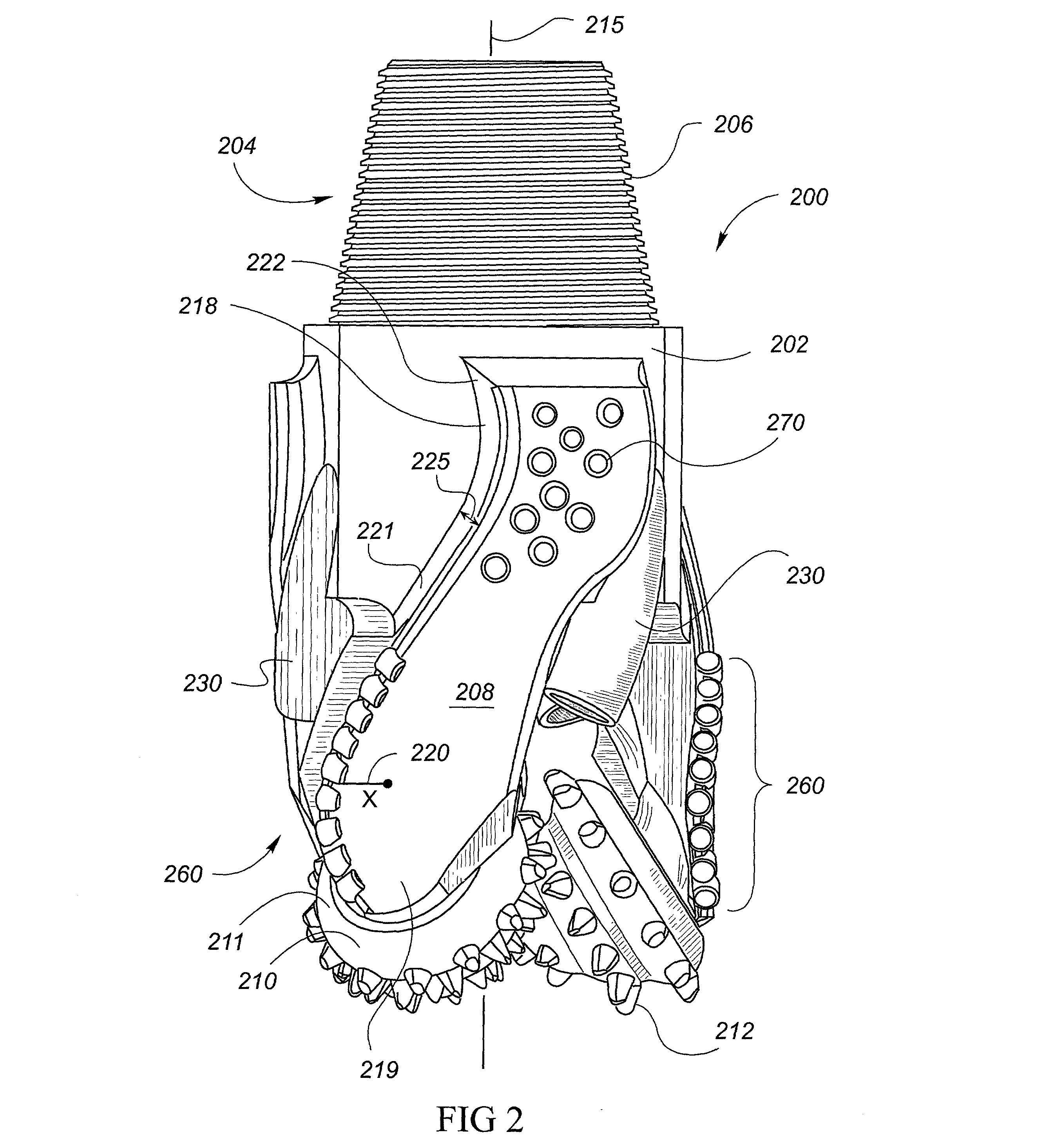Hydro-lifter rock bit with PDC inserts
a technology of hydraulic lifter and insert, which is applied in the direction of drilling casings, drilling pipes, cutting machines, etc., can solve the problems of affecting the drilling life and peak effectiveness of roller cone rock bits, affecting the penetration rate of shear cutter bits, and affecting the wear of elements on shear cutter bits
- Summary
- Abstract
- Description
- Claims
- Application Information
AI Technical Summary
Benefits of technology
Problems solved by technology
Method used
Image
Examples
Embodiment Construction
[0031]The rock bit 200 of FIG. 2 includes a body 202 and an upper end 204 that includes a readed pin connection 206 for attachment of a drill string used to raise, lower, and rotate bit 200 during drilling. Body 202 includes a number of legs 208, preferably three, each of which includes a mud lifter ramp 218 of width 225, a row of polycrystalline diamond cutters (PDC) 260, and wear resistant inserts 270. Each leg terminates at its lower end with a rotatable cone 210. Each cone 210 comprises a cone shell 211 and rows of cutting elements 212, or inserts, arranged in a generally conical structure. These inserts 212 may be tungsten carbide inserts (TCI) mounted in a pocket or cavity in the cone shell, or may be milled teeth on the face of the cone, as is generally known in the art. Each leg also includes a lubrication system which confines lubricant within bit 200 to reduce the friction in bearings located between rotatable cutters or cones 210 and their respective shafts. Semi-round to...
PUM
 Login to View More
Login to View More Abstract
Description
Claims
Application Information
 Login to View More
Login to View More - R&D
- Intellectual Property
- Life Sciences
- Materials
- Tech Scout
- Unparalleled Data Quality
- Higher Quality Content
- 60% Fewer Hallucinations
Browse by: Latest US Patents, China's latest patents, Technical Efficacy Thesaurus, Application Domain, Technology Topic, Popular Technical Reports.
© 2025 PatSnap. All rights reserved.Legal|Privacy policy|Modern Slavery Act Transparency Statement|Sitemap|About US| Contact US: help@patsnap.com



